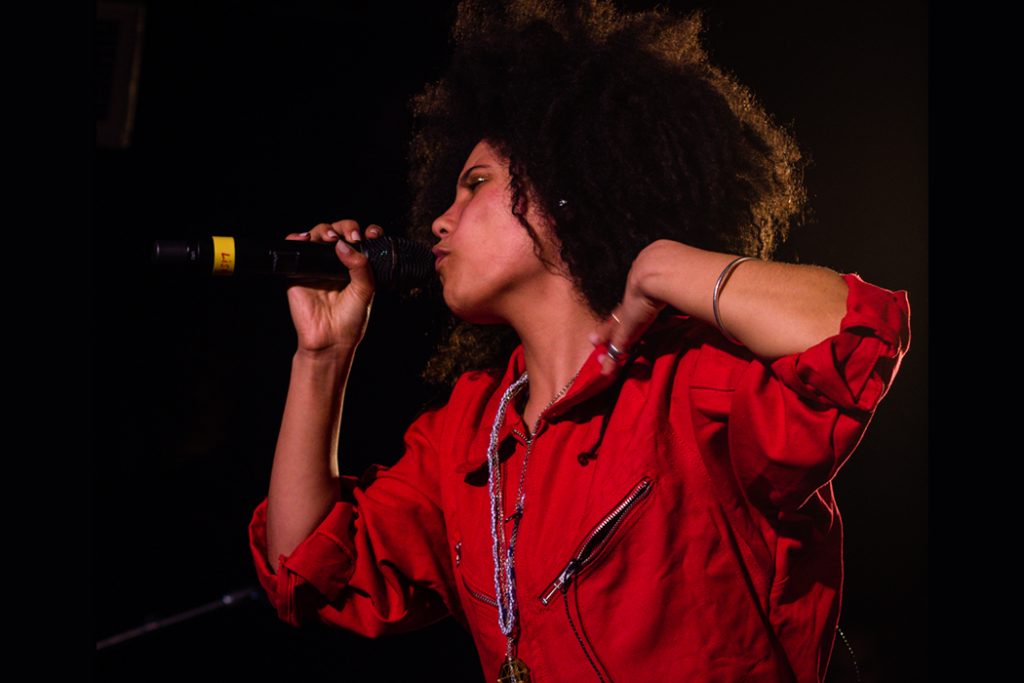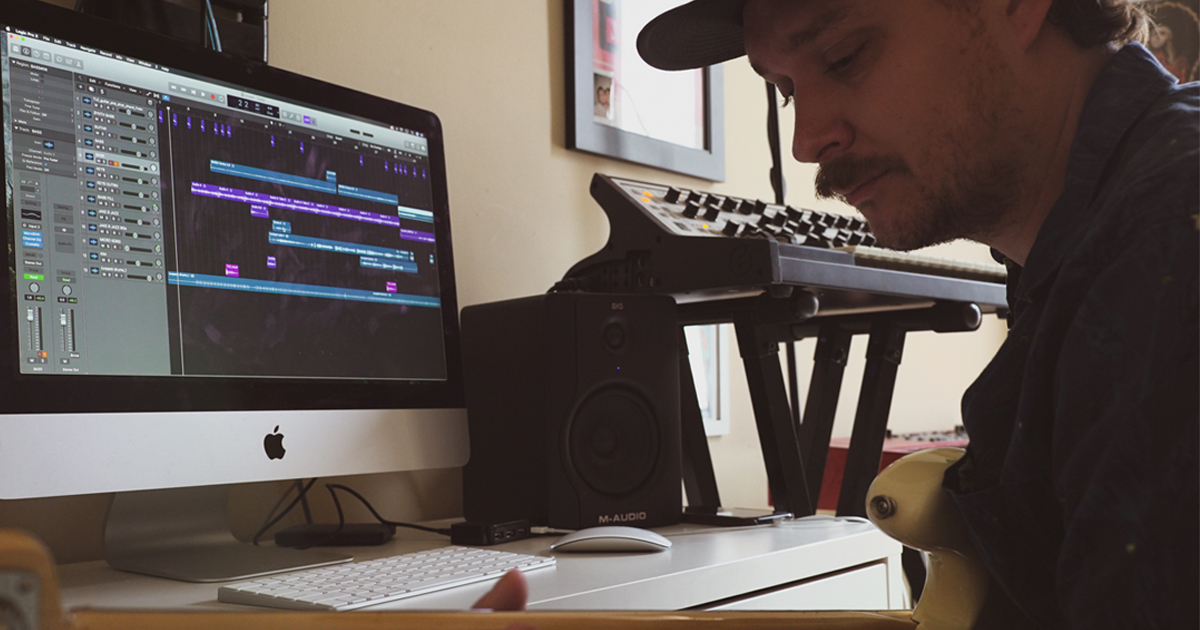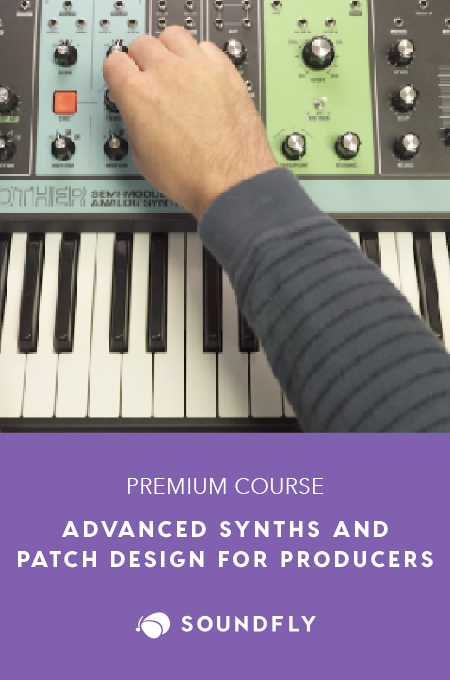
+ Improve your songwriting with Soundfly! Explore our range of courses on emotional chord progressions, basic songwriting technique, songwriting for producers, and many more. Subscribe for unlimited access here.
In songwriting, song form determines the structure of your song. When navigating through different sections like verse, chorus, pre-chorus, or the bridge — a song’s form is its road map.
However, many beginner songwriters struggle with combining the different parts of a song to create a cohesive story, especially one that moves their listener emotionally throughout. Song form is a great tool for storytelling, and there are many ways of using it as such, to make sure that your message is delivered loud and clear.
So let’s learn a few types of song form and how they’re used in songs we all know and love. And if you’d like to go a lot deeper in your perfection of song structure, form, and storytelling, you’ve got to check out Soundfly’s Songwriting For Producers course, which is designed to help you turn your strongest ideas into fully finished tracks!
Verse
Your verse is typically where the main idea of your song is introduced. It sets the emotional tone, and it sets the context up, so it would be useful to write a verse that grabs the attention of the listener early on.
Our job throughout the song is to keep the listeners interested, so we should come up with a good opening line and make sure that the listeners stay with us, and follow our lyrical story, throughout. As an example, listen to the first verse of Charlie Puth’s “Attention.”
You’ve been runnin’ ’round (3x) throwin’ that dirt all on my name,
‘Cause you knew that I, knew that I, knew that I’d call you up,
You’ve been going ’round (3x) every party in LA,
‘Cause you knew that I, knew that I, knew that I’d be at one.”
After hearing this verse, we want to know where this romantic yet tormented story is going. We must keep listening!
It’s kind of like a cliffhanger episode ending where we can’t wait for the next episode to begin. The verse kind of works in a similar way, where it should lead the listener to the next section. (*To learn about how important your second verse is, read this.)
Pre-Chorus
The pre-chorus appears between verse and chorus. Musically, this section might be shorter, feel more unstable, and it could have a new melody. The pre-chorus is an optional, transitionary section that leads us to the chorus.
Let’s return once again to “Attention,” to see how Puth tells us what happens next in his story, before leading us to his chorus.
“I know that dress is karma, perfume regret,
You got me thinking ’bout when you were mine,
And now I’m all up on ya, what you expect?
But you’re not coming home with me tonight.”
Here, the plot simply thickens. He’s taking it slow as he rolls out dramatic information, laying his feelings out there but telling us that his crush is no longer available…
Chorus
Now, we come to the main idea of the song. Whatever happens in the verses needs to converge here, so your juiciest and most resonant lyrics should live here in the chorus.
“You just want attention,
You don’t want my heart,
Maybe you just hate the thought of me with someone new,
Yeah, you just want attention,
I knew from the start,
You’re just making sure I’m never gettin’ over you.”
Here, Charlie Puth starts to sum up his feelings, whereas before they were scattered and fragmented. The chorus functions the same for the character in the story as it does for the listener, it’s why we often refer to this section as “the hook” — it’s the main takeaway, the thing we’re supposed to remember long after the story is over.
Musically it should also be the catchiest part of the song. In other words, it is the “sing along” part, often the most memorable section, and should climax in terms of energy.
Our first song form is, therefore: Verse – Pre-Chorus – Chorus
Verse – Pre-Chorus – Chorus is arguably the most popular song form in popular music.
In this form, these three sections — the verse, pre-chorus, and chorus — work together as a unit to tell a great story and to tell it in a memorable way. The verse introduces the story, the pre-chorus moves the story forward, and the chorus cements the main idea of the song and makes sure people remember it.
Every once in a while, the song will require a fourth section to change the vibe and offer a new perspective. This is when the bridge section comes in…
+ Learn songwriting, theory, production, composition, arranging, mixing, and more — whenever you want and wherever you are. Subscribe for unlimited access!
The Bridge
Your bridge is the most distinct part of your song. While the verse, pre-chorus, and chorus tend to work together, the bridge is a section specifically designed to offer contrast the rest of the song, both lyrically and musically.
Lyrically speaking, a bridge might serve to present a new side of the story or show a revelation of some kind within the song. For example, in a break-up song, your verse, pre-chorus, and chorus might paint the picture of what happened and how terrible it feels to go through a split. The bridge then will give this storyline a contrast, and show that you’re moving on, starting a new life, having reservations, revealing a secret, etc.
In Justin Timberlake’s “Señorita,” the lyrics tell the story of a girl whose boyfriend mistreats her. In the bridge, he offers a solution to her problem by bringing up the possibility of them being together instead.
“When I look into your eyes,
I see something that money can’t buy,
And I know if you give us a try,
I’ll work hard for you girl,
And no longer will you ever have to cry.”
Our second song form is: Verse – Refrain
Verse-Refrain is a form that originates in traditional and modern folk music, but has crossed over to styles like the blues and rock ‘n’ roll. Refrains are repetitions of phrases or words that exist outside of what you’d consider a typical chorus format.
This form is an especially powerful tool for storytelling because it’s built to stretch around long and complicated stories, as opposed to having to crunch the drama into just a handful of choice lyrics.
A great example of the Verse – Refrain structure can be found most commonly in Bob Dylan’s “The Times They Are A-Changin.”
“Come gather ’round people,
Wherever you roam,
And admit that the waters around you have grown,
And accept it that soon,
You’ll be drenched to the bone,
If your time to you is worth savin’,
Then you better start swimmin’ or you’ll sink like a stone,
For the times they are a-changin’.”
Then a new verse will start and end with the recurring refrain.
“Come writers and critics,
Who prophesize with your pen,
And keep your eyes wide,
The chance won’t come again,
And don’t speak too soon,
For the wheel’s still in spin,
And there’s no tellin’ who that it’s namin’,
For the loser now will be later to win,
For the times they are a-changin’.”
As you can see, at the end of every verse comes a recurring refrain. The refrain is all it takes to reiterate the central idea of the song, without needing a full chorus.
Our third song form is: AABA
The AABA song form originally comes from jazz, but can today be found in styles ranging from R&B to hip-hop to funk, and all of the pop music influenced by those styles.
How it works is that the A section appears twice to establish, and is then followed by the contrasting B section. The contrast can be melodic, harmonic, or lyrical. It’s then completed with one last A section in the end.
This originates in the 12-bar blues format as well, and so it can be used microscopically (as a way of writing melody or progressions that repeat) or macroscopically (in how an entire song is organized). That makes it one of the most flexible formats in the songwriter’s toolbox.
These three song forms are the most common ways to structure contemporary music. Hopefully, now you have a clearer sense of the individual sections of the song, and you can structure your songs accordingly. Creating a road map is a crafty skill, but don’t forget that your objective is to get the listener to pay attention and have them stay throughout the song.
Improve all aspects of your music with Soundfly.
With online courses on recording, mixing, producing, and songwriting both in and out of the DAW, all you have to do is subscribe to start learning everything you need to know to develop your musical ideas into fully fleshed out songs!





